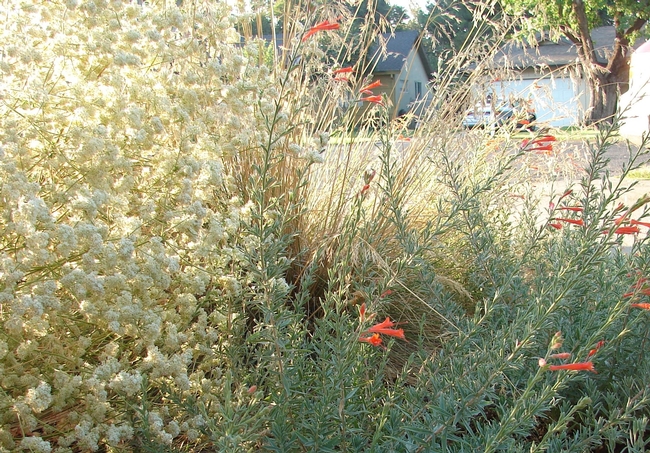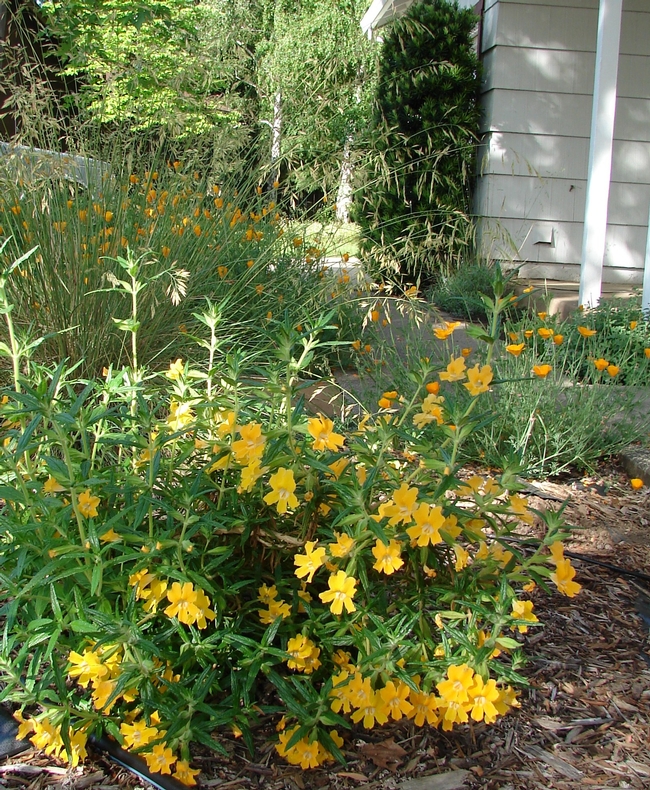By Eve Werner, Butte County Master Gardener, December 11, 2015.
Fall and winter are the perfect seasons to plant a native pollinator garden. Pollinators are the buzzing, flying creatures responsible for the formation of many of the fruits and vegetables that we humans love to eat. Planting for pollinators is a colorful way to attract interesting and beautiful birds, butterflies, bees, and insects to your garden while increasing the productivity of many edible plants.
Pollen is found in the flowers of plants. Different pollinators prefer variously shaped flowers to accommodate their personal anatomy. Selecting an assortment of California native plants with diverse flower shapes and staggered bloom times ensures that a wide variety of native pollinators will thrive in your garden.

Hummingbirds, for example, reach into tubular flowers with their long, thin beaks. Zauschneria californica (California Fuchsia; also known as Epilobium canum) is a perennial native to Butte County that is covered with brilliant orange-red tubular flowers from mid-summer through fall. This plant is a hummingbird magnet! Zauschneria ‘John Bixby' and Zauschneria ‘Calistoga' are especially attractive and well-behaved varieties of California Fuchsia. Plant Zauschneria in part- to full-sun areas of your garden. Water once or twice a month during the dry season. To keep it looking tidy, cut this perennial to within a couple inches of the ground annually in late fall/early winter.
To attract a miniature zoo over a long period, pair early-summer-blooming Salvia ‘Winnifred Gilman,' (Winnifred Gilman Sage), with late summer-blooming Eriogonum nudum, (Naked Buckwheat) or Erigonum fasciculatum (California Buckwheat). Plant these beauties in full sun. Water the sage once or twice a month. The buckwheats need no added summer water after the first year but can tolerant semi-weekly watering. Sit quietly and watch numerous species of tiny (non-stinging) native bees and wasps harvest nectar from the ball-like flower clusters of these plants. See if you can spot one-quarter-inch-long metallic green sweat bees among the crowd.

Mimulus (Diplacus) aurianticus (Sticky Monkey Flower) offers deep, wide tubular flowers that provide a helpful ‘landing pad' for several species of butterflies and bees. Hummingbirds love them, too. The soft orangey-yellow blossoms light up part shade gardens in the spring. Water Sticky Monkey Flower once or twice a month during the summer. It is stress deciduous, so it will lose its leaves or look wilted during the heat of summer.
Planting for pollinators is an easy and fun way to add a new dimension of interest to your native garden!